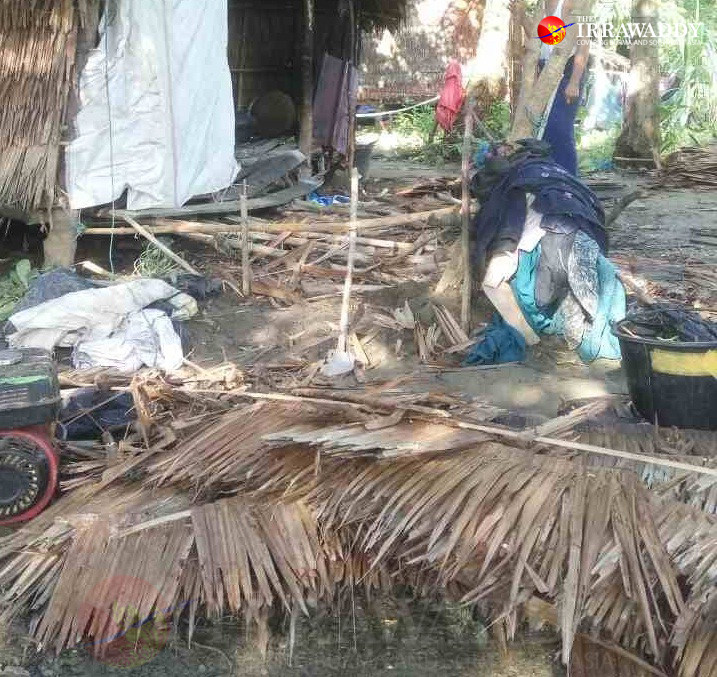PATHEIN, Irrawaddy Region—Local residents in Ngapudaw Township, Irrawaddy Region were in a state of panic on Monday after a herd of wild elephants searching for food destroyed houses and ate crops in Thit Yaung and Tin Chaung village-tracts.
Three hungry elephants destroyed a house in Michaung Gaung Village in Thit Yaung Village-Tract and another elephant fed itself on the crops in the village of Thayet San in Tin Chaung Village-Tract.
“Wild elephants destroyed the kitchen in one of the two houses at the far end of the village, apparently while searching for food. They are still near the village and residents dare not go outside,” U Kyaw Htein, a clerk with the Thit Yaung Village-Tract administration told The Irrawaddy on Monday. He said no one was injured by the elephants.
“A wild elephant has been wandering around our village for about 10 days. It eats bananas, bamboo, paddy plants and any other plants it can eat at night,” said farmer U Taung Lone Kyaw from Thayet San Village. “We tried to scare it away but it doesn’t go away. So we are in constant fear that it will come to destroy our village.”
Forest reserves in Pathein, Ngapudaw and Thabaung townships in Irrawaddy Region are home to wild elephants. Over the past decade, irresponsible and illegal logging and human settlement in forests have shrunk elephant habitats.

As their habitats shrink, wild elephants come close to human settlements in search of food and this leads to human-elephant conflicts, according to the Myanmar Elephant Lovers Association, a local community-based organization based in Ngapudaw Township.
“There are two reasons why wild elephants come close to villages. First, they are being chased by elephant poachers and they think they will be safe near human settlements. Second, there is a shortage of food for them in the forest and they come to eat people’s crops,” said Dr. Lin Lin Tun, a member of Elephant Emergency Response Unit (EERU).
The EERU is a branch of the Myanmar Timber Enterprise under the Ministry of Natural Resources and Environmental Conservation that works to keep elephants away from human settlements, often by using their own trained elephants, and also to protect wild elephants from poachers. EERU carries out regular patrols across forests to look after wild elephants and arrest poaching rings.
Elephants have historically been poached for their tusks but are now increasingly killed for their hides as demand for elephant hides increases. In Myanmar, both tusks and hides are primarily smuggled to China.
Elephant poaching is the most pervasive in Irrawaddy Region, especially in Pathein, Ngapudaw and Thabaung townships. Poachers however are usually not local residents; many of them come from Magwe Region.
There are only 1,600-2,000 elephants left in the Myanmar, according to the Forest Department, compared with as many as 10,000 in the 1940s. The main driver of this decline is poaching.
Translated from Burmese by Thet Ko Ko.
You may also like these stories:
Wild Elephant Poached and Skinned in Myanmar Forest Reserve
Photographer Tells the Dark Side of the Elephant’s Story in Myanmar
Alleged Elephant Poachers Arrested in Irrawaddy Forest Reserve

















